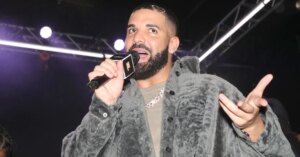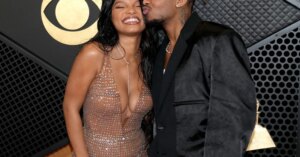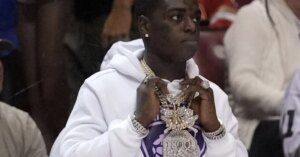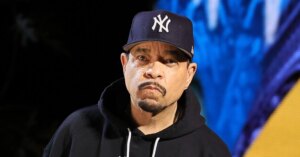Meet William Melvin Kelley: The Godfather Of “Woke”


Photo Credit: Carl Van Vechten Collection/Getty Images
Woke is ubiquitous now, used to describe everything from films to chefs.In the first of his three-part Origin of Woke series, Elijah Watson highlights William Melvin Kelley, the Harlem author credited with coining the word.
I arrive on W 150th Street in Harlem. The afternoon sun on July 5 has my chest drenched in sweat as I seek shade underneath a door canopy to call Jesi Kelley. She answers and I tell her that I’m outside her apartment. I go through the door and enter an elevator to go to the building’s fifth floor. The elevator opens and as I turn to my left I see Jesi standing outside of her apartment door. “Please take off your shoes,” she says. I comply, place them near a collection of other shoes and follow behind her as she leads us into a ventilated living room where her mother, Karen Aiki Kelley, and an ice-cold pitcher of lemonade await. I introduce myself to Karen and take a seat on a couch.
“Poppy used to sit exactly where you’re sitting,” Jesi says, referring to her father, William Melvin Kelley, who died at the age of 79 in February 2017. I’m here to learn about William from the people that knew him best, his daughter and wife. But I’m also here to learn how he discovered a word that is so integral to the lexicon of the Internet age and that the Oxford English Dictionary credits him with coining — woke.

William Melvin Kelley first used woke in his New York Times essay “If You’re Woke You Dig It.” Illustration by Carl Rose via New York Times
Woke. You know the woke I’m talking about. The woke that Childish Gambino sings about on “Redbone.” The woke that Erykah Badu sings about on “Master Teacher.” The word is ubiquitous now, used to describe everything from films to chefs. This has culminated into the Oxford English Dictionary extending the definition of woke as not only a verb but now an adjective, with the latter meaning “Alert to injustice in society, especially racism.”
The origins of the word were attributed to Badu for nearly a decade when she first sang the word on 2008’s “Master Teacher“: “What if it were no niggas/Only master teachers?/ I stay woke (dreams dreams).” However, late last year woke was revealed to be a part of the Black Vernacular since at least the 1960s, used by William in his New York Times essay “If You’re Woke You Dig It.” Published in 1962, the essay talks about black slang and its invention and reinvention in retaliation to its appropriation by white people. William’s essay doesn’t use the word ‘woke’ beyond its title, but it’s worthy of being described as such, William offering a prophetic commentary that is just as sobering now as it was then, considering woke’s worldwide appropriation.
In researching William I made an unfortunate discovery — he had passed away. However, he is survived by his wife Karen; daughters Jesi and Cira; three grandchildren and a great-grandson. Hoping to learn more about William and his ties to woke I contacted Karen and Jesi, who enthusiastically accepted my request to speak with them. However, upon hearing the two talk about William, I realized that he was so much more than the word he coined — an integral black voice who was ahead of his time.

William Melvin Kelley was the son of William Melvin Kelley Sr., an editor at the African American newspaper the Amsterdam News, and Narcissa Agatha Garcia, a homemaker, and devout Catholic. Photo Credit: Jesi Kelley
Born in Staten Island on November 1, 1937, William was the son of William Melvin Kelley Sr., an editor at the African American newspaper the Amsterdam News, and Narcissa Agatha Garcia, a homemaker, and devout Catholic. William grew up in a working-class area of the North Bronx surrounded by Italian-Americans and attended the private Fieldston School in Riverdale, a predominantly Jewish school where he had his first experiences of prejudice and racism. He then attended Harvard in 1956 with intentions of becoming a civil rights lawyer but instead switched his major to English. William ultimately left Harvard without a degree, but he did benefit from the instruction of two prominent authors, John Hawkes and Archibald MacLeish, and received Harvard’s best-story award for his short story The Poker Party, a foreshadowing of William’s gift of storytelling.
Prior to writing “If You’re Woke You Dig It,” William published his first novel A Different Drummer, which tells the story of a mythical southern state that loses its entire black population after one black man, Tucker Caliban, spreads salt on his land, burns down his house, and heads North to start a new life with his family. The book was unlike anything written by William’s peers and predecessors; rather than tell the story through one point of view, he uses numerous white characters to narrate the disappearance of the state’s black population. Ultimately, A Different Drummer provides a commentary on race relations in America but with a satirical twist often not present in books by black authors at the time, as William highlights white America’s dependence on both white supremacy and the presence and labor of black people to define themselves. Overall, A Different Drummer offers a commentary that is defiant and empowering — white people need us more than they would like to admit.

William Melvin Kelley’s first book, A Different Drummer, tells the story of a mythical southern state that loses its entire black population Source: Photobucket
Around the ’60s came the rise of the Black Arts Movement, the spiritual successor to the Harlem Renaissance and the artistic movement that came out of the Black Power movement. By now, William lived in Harlem with Karen alongside his acquaintances, James Baldwin, Amiri Baraka, Langston Hughes, Ishmael Reed, and other authors. And although William participated in numerous panels with his peers he primarily kept to himself, championing blackness but never really associating with any group or organization.
“All he wanted to do was write,” Karen says. “He was so into his culture and into his work.” For William, Harlem was his culture. Living on 149th Street between Amsterdam Avenue and St. Nicholas Avenue, he discovered himself in the Black Capital of America. Attending events at Maketa Dorothy White‘s D’Zora House; walking to the now-defunct Sherman’s BBQ for food — William lived in many places but only called some home, one of them being Harlem. He lived and died here, a place that is such an integral part of black America’s history and having possibly birthed the most important black colloquialism of the 21st century — woke.

William Melvin Kelley overheard someone use woke in Harlem and incorporated that vernacular into his work. Photo Credit: Jesi Kelley
According to Karen and Jesi, William overheard someone use woke in Harlem. With this in mind I assumed that someone had to have used the word in an article or book before or during the same time William did, another — and possibly earlier — documentation of its use a mere library database search away. Finally, my journey in pinpointing the origins of woke was coming to a close. I was wrong. I spent hours upon hours at the Schomburg Center in Harlem, meticulously searching its database for any article, book, essay, journal, or black newspaper that possibly used the word before William did. I found nothing. I then went through several linguistic books on the Black Vernacular hoping that it would pop up: Cab Calloway’s Hepsters Dictionary: Language of Jive (1939); Dan Burley’s Original Handbook of Harlem Jive (1944); Jive and Slang of Students in Negro Colleges (1947); Talkin’ and Testifyin’: The Language of Black America (1977); Juba to Jive: A Dictionary of African-American Slang (1994); and African American Slang: A Linguistic Description. Nothing.
Discouraged, I discovered that over a decade after William used woke, author Barry Beckham used the word in his 1972 play Garvey Lives! writing:
I been sleeping all my life. And now that Mr. Garvey done woke me up, I’m gon’ stay woke. And I’m gon’ help him wake up other black folk.
Beckham, who has his own storied career as a writer (My Main Mother, Runner Mack, and The Black Student’s Guide to Colleges), presumably lived in Harlem at some point considering he met his first wife Jeree Palmer there. However, when I asked Beckham if he first heard woke in Harlem and how he came to use the word in Garvey Lives! he couldn’t recall, the now 73-year-old unable to even remember the part of his play I was referring to.
However, even without Beckham’s affirmation, it is fascinating to consider that woke originated in Harlem. For most of the 20th century, Harlem was the epicenter of black culture. From the Harlem Renaissance to the Black Arts Movement, there’s a reason why Harlem was once referred to as America’s Black Capital. So it’s not far-fetched to believe woke was birthed here because countless black people discovered themselves and one another here. They were awakened here. But it’s also beautiful to think that woke was its own community colloquialism. That it wasn’t beatnik slang, jazz slang, or jive slang, but Harlem slang — a word said on certain blocks by certain people throughout the neighborhood, now said by people across the world. For better or worse.

One of the last projects William Melvin Kelley released before his death was 2014’s The Beauty That I Saw, a collection of videos he took throughout his time living in Harlem. Photo Credit: Jesi Kelley
Harlem and woke now represent something different in the 21st century. Sure, their significance to black people is known, but both have become distorted in their own respective ways. In 2008, the New York Times reported that for the first time since the 1930s, less than half of Harlem’s population was black, with the neighborhood experiencing gentrification since the 1980s. Nowadays, it’s hard to miss the symptoms of gentrification in Harlem: displacement as a result of higher rent rates; modern apartment buildings built alongside classic brownstones; an attempt (albeit failed) at rebranding a part of Harlem to entice potential transplants.
Woke has been prescribed to anyone and anything that even shows a hint of awareness to inequality and injustice, diluting the word and transforming it into something that feels more like a performative trend — people want to be woke without really being woke.
William was Harlem and he was woke — the godfather of woke when you consider that it’s been 55 years since he wrote “If You’re Woke You Dig It.” William admired, championed, and loved black people until his death, telling their stories through essays, books, and even short films, often with a dash of humor, poignancy, satire, and surrealism that was ahead of its time.
“He was the documenter, he was the scribe, he was the watcher,” Jesi says. “He valued his culture.”
One of the last projects William released before his death was 2014’s The Beauty That I Saw, a collection of videos he took throughout his time living in Harlem. The film is a celebration of blackness than anything else: a couple embraces on a cold winter day; children play in a park; and a parade is soundtracked by an ensemble of steel drum players. Contrasted against this are buildings being torn down and rebuilt, along with scenes of police officers surrounding buildings and protests.
What you see is what you get with The Beauty That I Saw. There are no pretenses — just a man capturing moments that speak to the black experience in America and, ultimately, what woke originated from and still represents — the resilience of black people to survive and live
__
Part two of Origin of Woke series explores woke’s rise through Erykah Badu’s song “Master Teacher” and the woman who introduced Badu to the word — Georgia Anne Muldrow.







